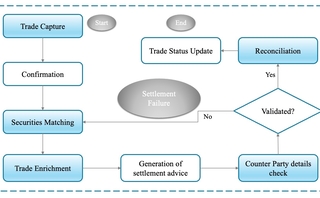Could cloud kill the data licensing debate and shake up pricing models?
Market participants say cloud has the potential to reimagine data licensing. But moving to the new operational model comes with a raft of unanswered questions.

Market data licensing is a touchy subject. Ask consumers, and they’ll tell you they struggle to understand the usage rights embedded in complex licensing policies. On the other hand, data sources and distributors say they need to ensure that consumers aren’t using more data than their contracts permit.
But as more financial firms, exchanges, and data distributors commit to multi-year cloud migrations, market data specialists on both sides of the debate are reimagining how the cloud could change data licensing for the better.
On the consumer side, it’s important to consider how to adapt to new means of metering usage in the cloud, and possibly adopt new tooling, says Nigel Phelan, market data services architect at JP Morgan. For example, if a contract specifies the number of devices or servers that data may run on, how does that contract apply to cloud environments where workflows are split across multiple virtual servers, and where data doesn’t reside in a static way on a physical box?
“In a cloud environment, you might have a system that’s designed to auto-scale across a pool of servers in the cloud, and this notion of what a ‘device’ is, is becoming a lot fuzzier. So how do you track how many devices you are using in a cloud environment to process the data? This is where we must start thinking about new tooling and what that will look like,” Phelan says.
For many firms, a cloud migration could be the chance to review their applications portfolio. Some might see it as an opportunity to consolidate platforms and cut down on the number of applications running. Others might want to redesign their tech to have more apps on the cloud than they did on-premises. This kind of review could change firms’ contracts with data providers, as they would be running more or fewer apps than were represented in their original data licenses. In the case of fewer apps, that might leave a firm paying too much and wanting to renegotiate its license; but if the data touches more apps, a firm would risk financial penalties if it didn’t immediately inform its provider, update the contract terms, and pay the appropriate increases.
The potential for different data licensing fees is only one aspect of moving to a cloud model. Firms also need clarity into the pricing structures governing the tech being used to handle the data, Phelan says. They need to understand the cost of moving from on-premises to cloud-based pricing structures. How does a capital expenditure model—where on-premises tech is built, run and managed in-house—compare to an operating expense model, where tech is outsourced and the firm is paying for on-demand compute to be scaled up or down as required?
Cloud offers elasticity, with users able to avail themselves of tools and applications only when they need to. This is hugely beneficial, but it might force the move to different licensing models to represent this kind of on-demand computing, Phelan says.
“How are people like us going to manage these contracts when we have potentially dynamic numbers of nodes (servers or virtual computers) in the environment? How are we going to make this trade-off, where we’ll process the job five times quicker if we do it on this many nodes, but it will cost us 10 times as much for the data?” he says.
“As an organization, we’re going to need transparency into those trade-offs. We’re going to need to be able to see what we gain in return for the extra cost and what the extra cost will be,” Phelan says.
Tracking the tricky stuff
However, for large financial institutions, the cloud also represents the potential to better track data usage within the firm.
“Cloud adoption offers the opportunity for us to revisit entitlements and look at how we can communicate policies and license obligations to users who access the cloud,” says Michelle Roberts, vice president of market data strategy and compliance at JP Morgan.
Market data vendors generally charge for their products under two main categories: display, which counts the number of people accessing data on a screen; and non-display, which charges for data fed into pricing engines or trading algorithms. These will be charged for by business unit, with charges on top for redistribution.
On-premises access control solutions like Refinitiv’s Dacs (Data Access Control System) allocate permissions to users. But large enterprises find it difficult to track permissions allocated to specific business units, and how that data is being used within those, Roberts says.
For example, a user may have permission to download data into a spreadsheet for analysis, but they may not have permission to share the results of that analysis with just anyone within their organization—or with customers at other firms. Each potential recipient may need to be entitled to receive the data also, or the firm risks non-compliance with the terms of their data license.
And while many firms have introduced programs to warn data consumers of their rights and responsibilities—and what they can and can’t do with data—the needs of each business line may require distribution to others and clients. In those cases, a consumer firm—whether it relies on individuals to monitor their usage or automated tools to monitor who accesses the data—is responsible for ensuring it remains compliant with the terms of its licenses.
A proof-of-concept (PoC) run at the World Financial Information Conference in October in Prague demonstrated the potential to change the game.
The PoC was run by the London Stock Exchange Group (LSEG), Goldman Sachs, Amazon, and Deontic Data, a rights management solutions vendor. The experiment aimed to test whether cloud-based tech could simplify entitlement frameworks and allocate permissions to the data.
During the demo, LSEG delivered a large ESG dataset from Refinitiv to Goldman Sachs via Amazon’s data warehouse product RedShift. Deontic provided APIs and a rights management service to describe the obligations associated with the ESG license.
Deontic managing director Ben Whittam Smith, who previously spent six years as an information architect at Thomson Reuters and Refinitiv, says anyone developing entitlement controls for data distributed on the cloud must consider three factors: what entitlements a vendor contract grants a customer, which systems and individuals within that firm have those permissions, and how the customer ensures those permission are complied with.
“To get rights management right on the cloud, we really need a path to solutions in all of those three areas,” says Whittam Smith, who chairs W3C’s Rights Automation for Market Data Community Group alongside Roberts.
The demo tested all three of these components. “Goldman Sachs wanted an internal enterprise service that allowed their own people to access, display, and run analytics over this data, but they also wanted a redistribution service that would allow them to share some of these analytics with their customers,” Whittam Smith says.
Historically on-premises, this type of data is delivered in two bulk files: one for internal use and one for external distribution. In both cases, usage rights to the data are segmented according to use case or business unit. This creates a complicated entitlement framework in which a firm might have to keep multiple versions of the same dataset and track usage closely.
For the purposes of the PoC, the Refinitiv ESG data was divided into two views: data products for internal, enterprise-wide usage, and those for redistribution. The latter required additional restrictions, as it included data, such as Reuters news feeds, that was not allowed to be shared outside of Goldman. The policies associated with these two data segments were then translated into the Open Digital Rights Language (ODRL), an open-source data model used for coding policy expressions.
“You can create over one database multiple views, and associate the correct permissions with each of those views,” Whittam Smith says. “So you no longer need to create 14 databases, or 14 bulk files, to support your 14 use cases. You can have one database and then segment that.”
The parties involved in the PoC say it demonstrated that it was possible for Goldman to comply with its contractual obligations with LSEG using the Deontic solution. The bank had to ensure that its own users couldn’t redistribute the Reuters data externally, but could fulfill their duties associated with the data, such as logging into the system and obtaining access according to their individual permissions.
This last element of the demo is what JP Morgan’s Roberts says is a potential game-changer for licensing market data in the cloud. Having to break up data usage into individual users or segmented use cases could give way to a more role-based entitlement model, where people with specified authorizations have the right to certain datasets.
“If you put that data in the cloud, you can create roles around what you can and can’t do with it, and only permit people who are allowed within that role to exercise it,” she says.
Custom made
For providers of market and alternative data, the cloud represents a shift to new operational and delivery environments to which they must adapt, but also the opportunity to offer data products in new ways.
Primarily, the cloud provides more options for customized data usage compared to traditional distribution models. Alireza Dorfard, head of market data and services at Deutsche Börse, says the buying large packages of data that include products the user doesn’t want or need could give way to more personalized distribution, where the user can choose the products they want to license.
Data marketplaces represent a shift in this direction, Dorfard says. Marketplaces like Amazon Web Services’ Data Exchange, where users can access third-party data and with existing entitlements, have grown in prominence over the past three or four years in response to consumer demand for networks of third-party data via a single provider. Other analogous platforms include the S&P Global Marketplace, launched in 2020, and Deutsche Börse’s 2022 partnership with the Santiago Exchange to provide access to alternative data from emerging economies.
“Markets are evolving, and demand with it,” Dorfard says. “However, this will require adaptions on all sides—data providers and users.”
Further reading
Only users who have a paid subscription or are part of a corporate subscription are able to print or copy content.
To access these options, along with all other subscription benefits, please contact info@waterstechnology.com or view our subscription options here: http://subscriptions.waterstechnology.com/subscribe
You are currently unable to print this content. Please contact info@waterstechnology.com to find out more.
You are currently unable to copy this content. Please contact info@waterstechnology.com to find out more.
Copyright Infopro Digital Limited. All rights reserved.
You may share this content using our article tools. Printing this content is for the sole use of the Authorised User (named subscriber), as outlined in our terms and conditions - https://www.infopro-insight.com/terms-conditions/insight-subscriptions/
If you would like to purchase additional rights please email info@waterstechnology.com
Copyright Infopro Digital Limited. All rights reserved.
You may share this content using our article tools. Copying this content is for the sole use of the Authorised User (named subscriber), as outlined in our terms and conditions - https://www.infopro-insight.com/terms-conditions/insight-subscriptions/
If you would like to purchase additional rights please email info@waterstechnology.com
More on Trading Tech
For MarketAxess, portfolio trading buoys flat revenue in Q3
The vendor is betting on new platforms like X-Pro and Adaptive Auto-X, which helped forge a record quarter for platform usage.
Quants look to language models to predict market impact
Oxford-Man Institute says LLM-type engine that ‘reads’ order-book messages could help improve execution
JP Morgan pulls plug on deep learning model for FX algos
The bank has turned to less complex models that are easier to explain to clients.
Nasdaq says SaaS business now makes up 37% of revenues
The exchange operator’s Q3 earnings bring the Adenza and Verafin acquisitions center stage.
Harnessing generative AI to address security settlement challenges
A new paper from IBM researchers explores settlement challenges and looks at how generative AI can, among other things, identify the underlying cause of an issue and rectify the errors.
The causal AI wave could be the next to hit
As LLMs and generative AI grab headlines, another AI subset is gaining ground—and it might solve what generative AI can’t.
Waters Wrap: Operational efficiency and managed services—a stronger connection
As cloud, AI, open-source, APIs and other technologies evolve, Anthony says the choice to buy or build is rapidly evolving for chief operating officers, too.
BlackRock forecasts return to fixed income amid efforts to electronify market
The world's largest asset manager expects bond markets to make headway once rates settle.








